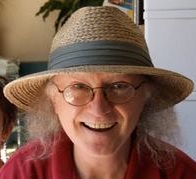9.10: Microarrays
- Page ID
- 3087
2D gels are one way of surveying a broad spectrum of molecules simultaneously. Other approaches to doing the same thing involve what are called microarrays. DNA microarrays, for example, can be used to determine all of the genes that are being expressed in a given tissue, simultaneously. Microarrays employ a grid (or array) made of rows and columns on a glass slide, with each box of the grid containing many copies of a specific molecule, say a single-stranded DNA molecule corresponding to the sequence of a single unique gene. As an example, consider scanning the human genome for all of the known mRNA sequences and then synthesizing single stranded DNAs complementary to each mRNA. Each complementary DNA sequence would have its own spot on the matrix. The position of each unique gene sequence on the grid is known and the entire grid would represent all possible genes that are expressed. Then for a simple gene expression analysis, one could take a tissue (say liver) and extract the mRNAs from it. These mRNAs represent all the genes that are being expressed in the liver at the time the extract was made.

The mRNAs can easily be tagged with a colored dye (say blue). The mixture of tagged mRNAs is then added to the array and base-pairing conditions are created to allow complementary sequences to find each other. When the process is complete, each liver mRNA should have bound to its corresponding gene on the array, creating a blue spot in that box on the grid. Since it is known which genes are in which box, a blue spot in a box indicates that the gene in that box was expressed in the liver. The presence and abundance of each mRNA may then readily determined by measuring the amount of blue dye at each box of the grid. A more powerful analysis could be performed with two sets of mRNAs, each with a different colored tag (say blue and yellow). One set of mRNAs could come from the liver of a vegetarian (tagged blue) and the other from a meat eater (tagged yellow), for example. The mRNAs are mixed and then added to the array and complementary sequences are once again allowed to form duplexes. After unhybridized mRNAs are washed away, the plate is analyzed. Blue spots in grid boxes correspond to mRNAs present in the vegetarian liver, but not in that of the meat eater. Green spots (blue plus yellow) would correspond to mRNAs present in equal abundance in the two livers. The intensity of each spot would also give information about the relative amounts of each mRNA in the tissues. Similar analyses could be done, using cDNAs instead of mRNA. Peptide microarrays have peptides bonded to the glass slide instead of DNA and can be used to study the binding of proteins or other molecules to the peptides.


